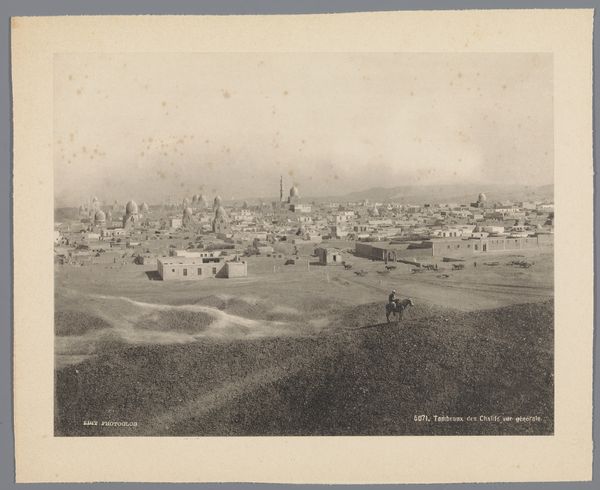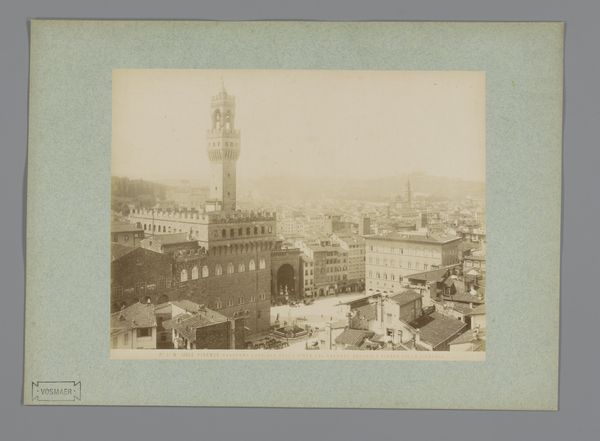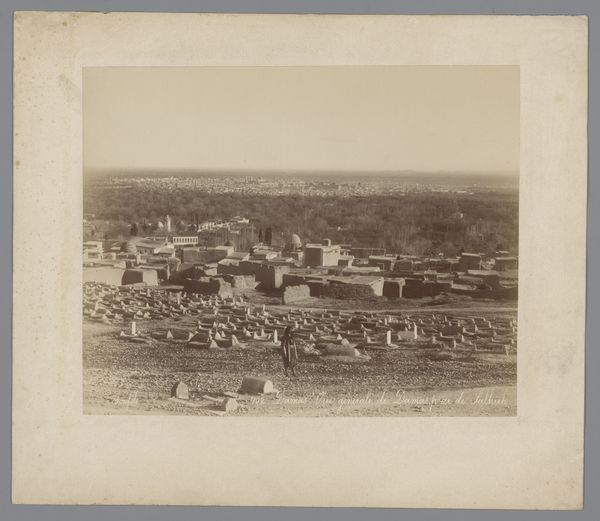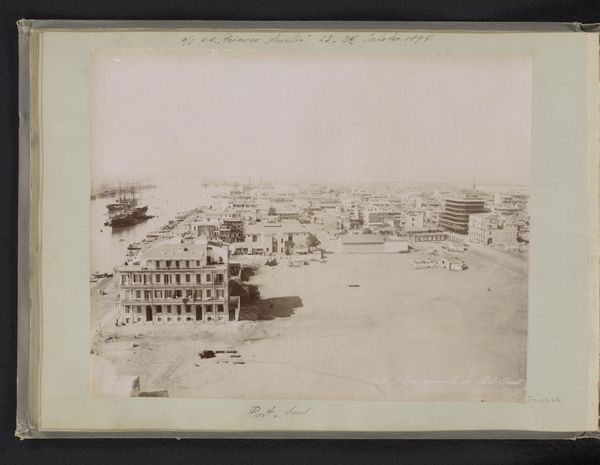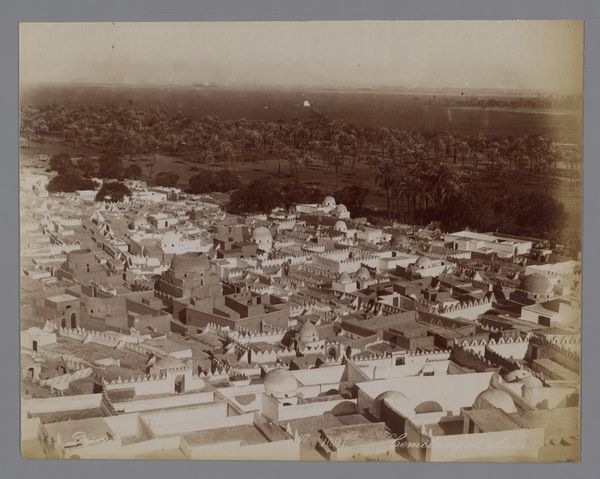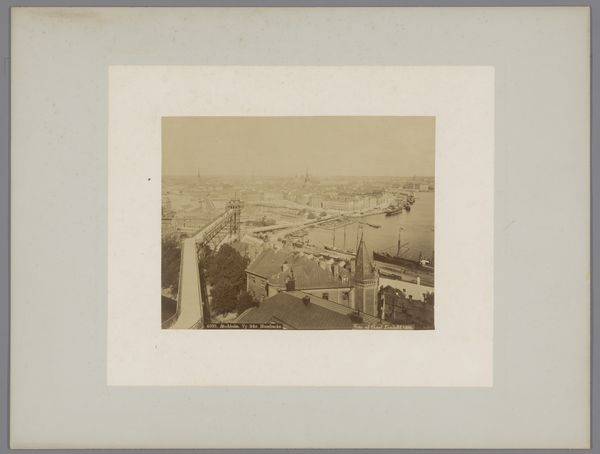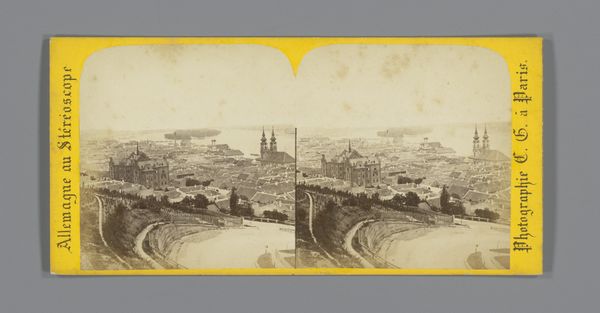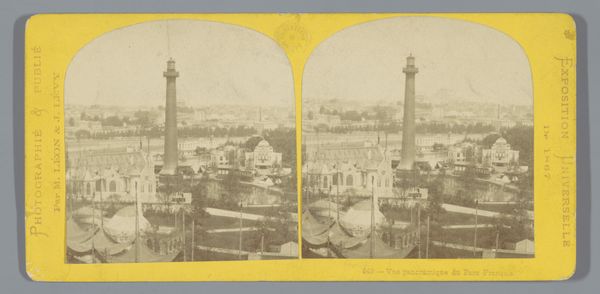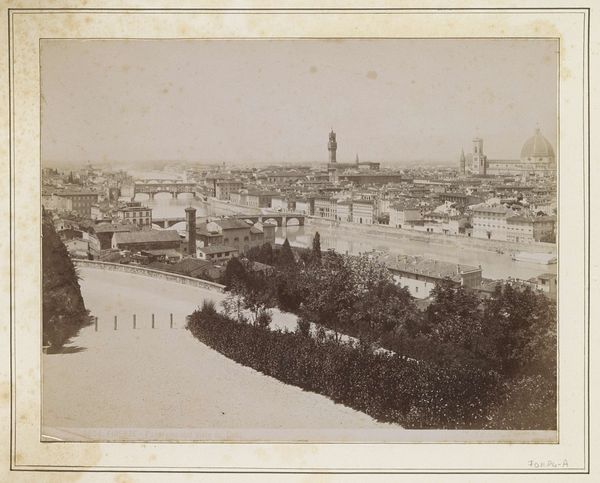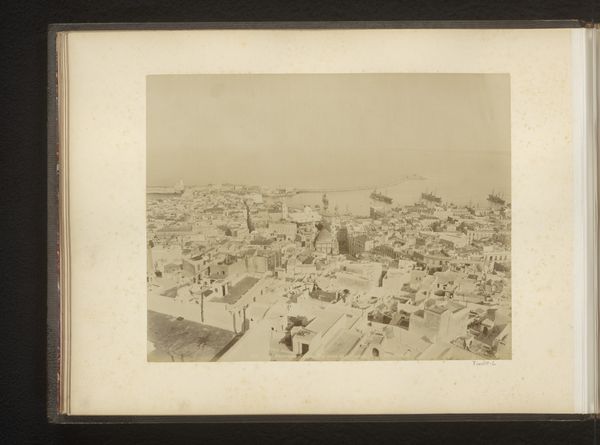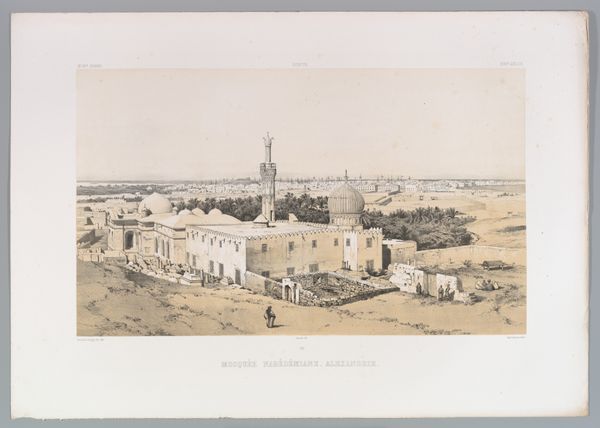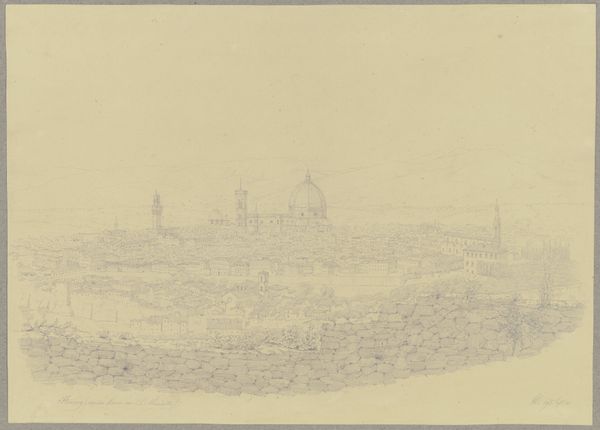
photography, albumen-print
#
landscape
#
photography
#
ancient-mediterranean
#
orientalism
#
cityscape
#
islamic-art
#
albumen-print
Dimensions: height 208 mm, width 265 mm
Copyright: Rijks Museum: Open Domain
Curator: This albumen print, dating from approximately 1875 to 1900, presents a view of the Mamluk tombs in Cairo. The piece is attributed to an anonymous photographer. Editor: It has an evocative feel; that muted palette almost makes it appear otherworldly, desolate. The high vantage point creates such interesting relationships between all of the forms. Curator: Yes, notice how the photographer employed a high perspective, giving the composition a layered feel. The geometric shapes of the architecture, the tonal gradations in the sky, create a compelling visual rhythm, don't you think? Editor: I do, but what also draws me in is the sense of historical weight, these Mamluk tombs serving as a constant visual reminder of the past and a deep connection to Islamic artistic traditions, these towering structures representing power and heritage. Curator: Intriguing. The minarets punctuate the skyline, a striking counterpoint to the more horizontal spread of the city. Editor: They punctuate and penetrate. Look at the consistent use of vertical lines as symbols connecting the earthly plane with a divine realm, something deeply embedded within Islamic architecture. They become potent signifiers of faith and cultural identity within this vista. Curator: Certainly. What is interesting, photographically speaking, is the technical achievement of capturing such detail and nuance with albumen print, achieving a wide spectrum of tones from light to dark. Editor: More than that, I see the sepia tones acting as a filter of memory, imbuing the scene with a feeling of faded grandeur, loss and contemplation. These aren’t just structures; they are cultural touchstones rendered in light and shadow. Curator: I find the work fascinating because of its technical clarity. The geometric precision contributes significantly to the overall sense of order. Editor: But the light seems to me the essential key to its interpretation as an enduring meditation on time and mortality. The structures stand still as everything around them will crumble and be reformed over time. Curator: A valid perspective; for me the appeal will always lie in the intricate way in which the artist utilizes light and form to shape our perceptions of space. Editor: Indeed, and perhaps what we've uncovered is how an image can become a powerful vessel of time.
Comments
No comments
Be the first to comment and join the conversation on the ultimate creative platform.
